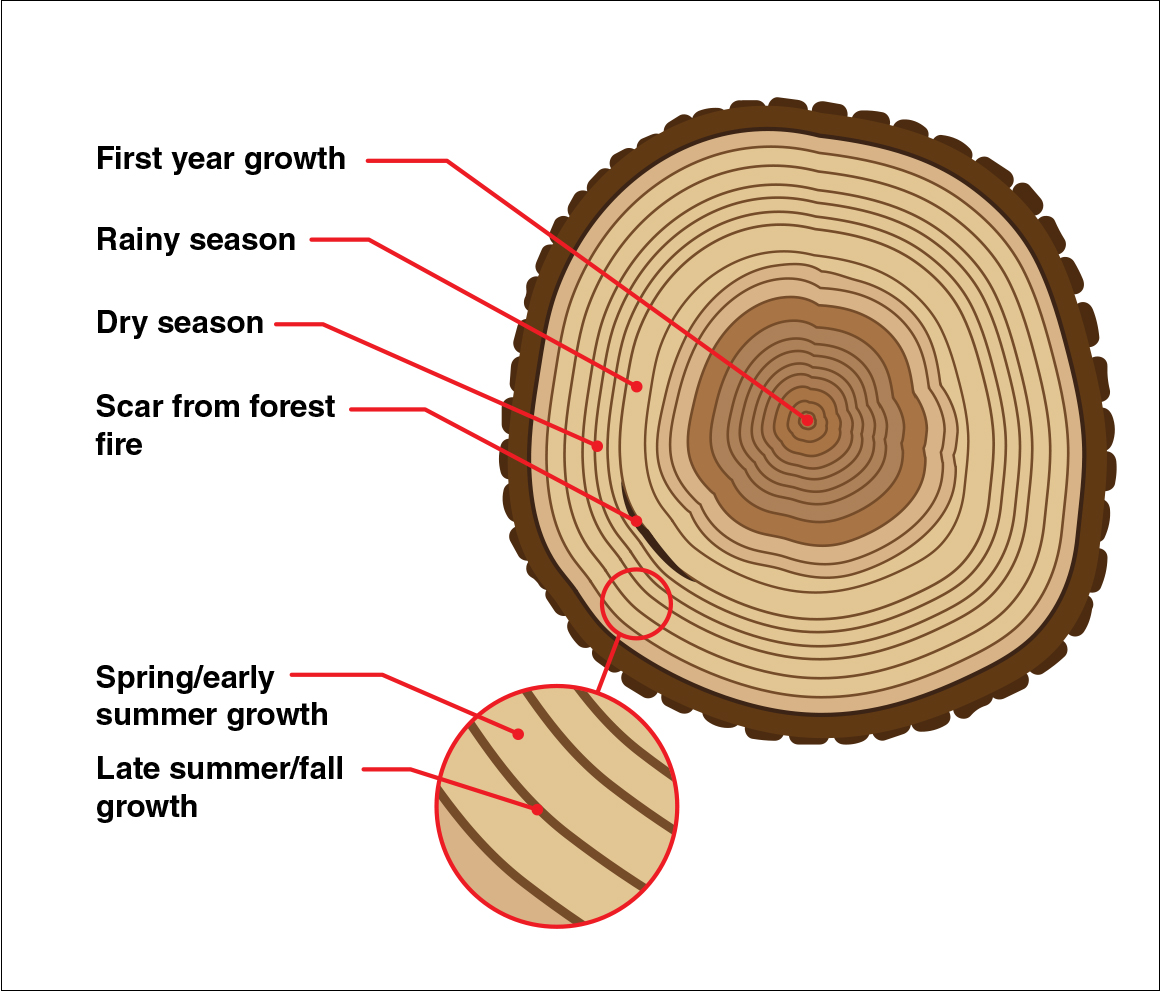As people around the world rush to plant trees to restore degraded land, meet climate mitigation commitments, and build biodiversity, the question of which trees to plant in which places is more relevant – and challenging – than ever. If we don’t choose well for current and future climatic conditions, our work will be wasted and the costs for ecosystems and people will be high.
To work out which species are likely to be climate-resilient in specific contexts, scientists often set up test plantations. But this method can take many years to yield the required results – and we don’t currently have the luxury of time. Fortunately, there’s another – faster and cost effective – way to learn about how species respond to climatic challenges: we just have to know how to listen to them.
Dendrochronology – the science of dating and studying the annual growth increments (known commonly as tree rings) in woody trees and shrubs – offers a means to do so. It’s been used in ecology and climate change studies for decades , but mostly in temperate regions where the rings are easiest to read and where there is relatively high capacity and funds to devote to this: Germany, for instance, has probably over 15 dendrochronology labs, whilst the entire African continent has just about six.
Yet Africa is hardest-hit by climate change, and restoration there is arguably most urgent, while the gaps in climate information are huge. As such, a group of scientists are launching a new initiative, the African Tree Ring Network for Resilience (ATRN), which seeks to advance the use of tree-based data in the tropics – particularly in Africa. We spoke to Aster Gebrekirstos, a global scientist at the Center for International Forestry Research and World Agroforestry (CIFOR-ICRAF) who leads the dendrochronology laboratory in Nairobi and heads up this new initiative under the umbrella of the Past Global Changes (PAGES) project.




